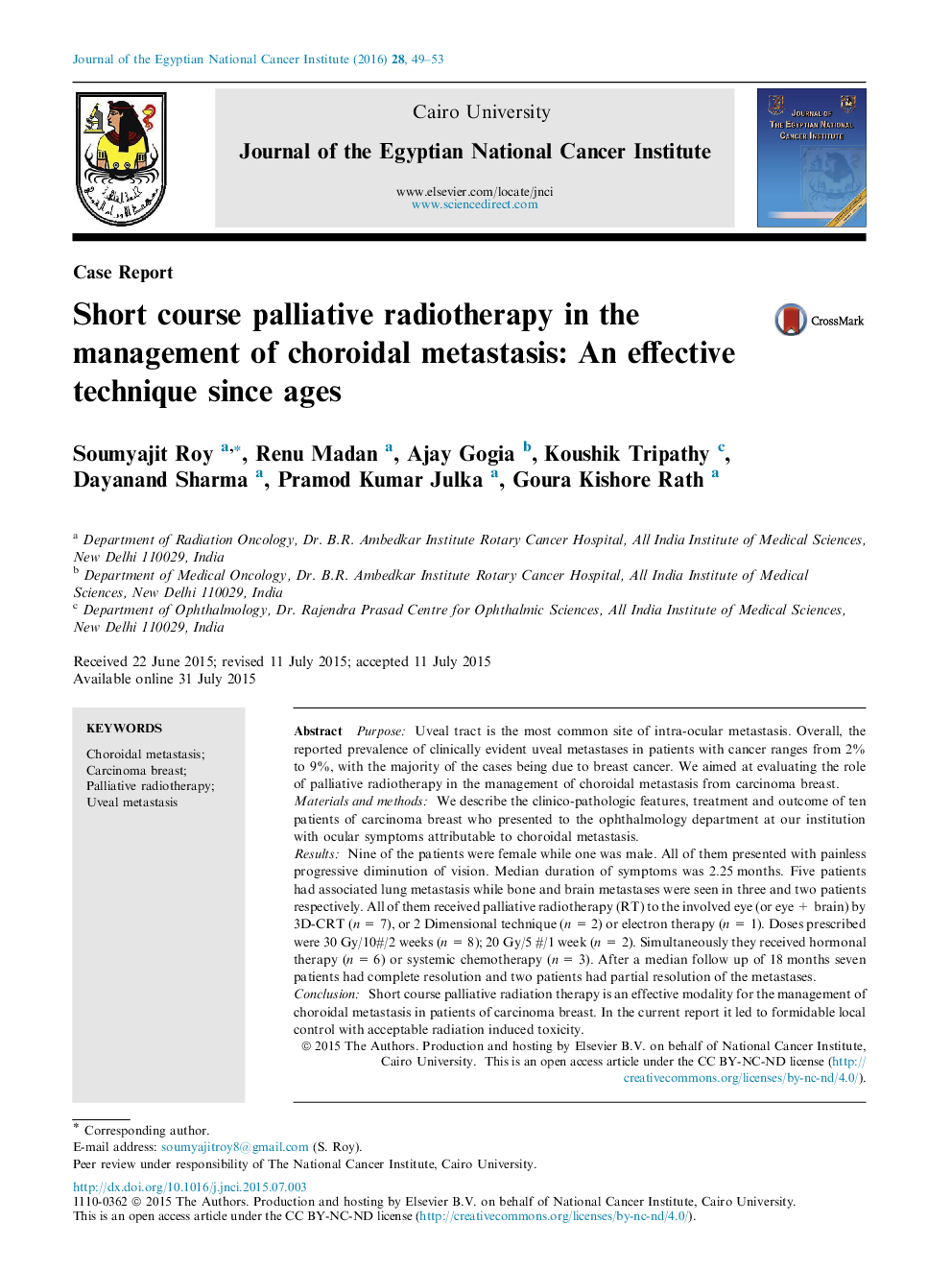| Article ID | Journal | Published Year | Pages | File Type |
|---|---|---|---|---|
| 3988892 | Journal of the Egyptian National Cancer Institute | 2016 | 5 Pages |
PurposeUveal tract is the most common site of intra-ocular metastasis. Overall, the reported prevalence of clinically evident uveal metastases in patients with cancer ranges from 2% to 9%, with the majority of the cases being due to breast cancer. We aimed at evaluating the role of palliative radiotherapy in the management of choroidal metastasis from carcinoma breast.Materials and methodsWe describe the clinico-pathologic features, treatment and outcome of ten patients of carcinoma breast who presented to the ophthalmology department at our institution with ocular symptoms attributable to choroidal metastasis.ResultsNine of the patients were female while one was male. All of them presented with painless progressive diminution of vision. Median duration of symptoms was 2.25 months. Five patients had associated lung metastasis while bone and brain metastases were seen in three and two patients respectively. All of them received palliative radiotherapy (RT) to the involved eye (or eye + brain) by 3D-CRT (n = 7), or 2 Dimensional technique (n = 2) or electron therapy (n = 1). Doses prescribed were 30 Gy/10#/2 weeks (n = 8); 20 Gy/5 #/1 week (n = 2). Simultaneously they received hormonal therapy (n = 6) or systemic chemotherapy (n = 3). After a median follow up of 18 months seven patients had complete resolution and two patients had partial resolution of the metastases.ConclusionShort course palliative radiation therapy is an effective modality for the management of choroidal metastasis in patients of carcinoma breast. In the current report it led to formidable local control with acceptable radiation induced toxicity.
